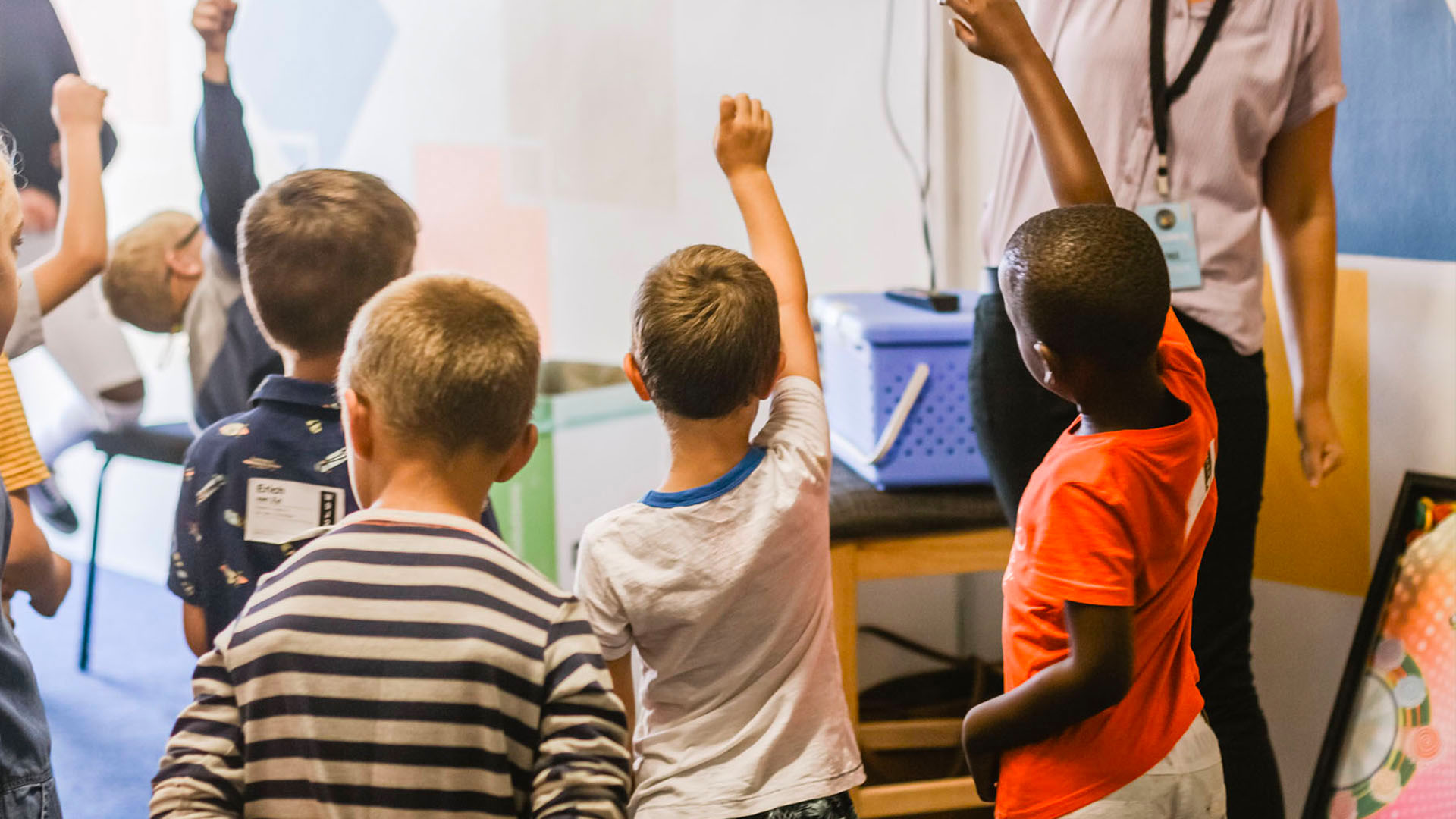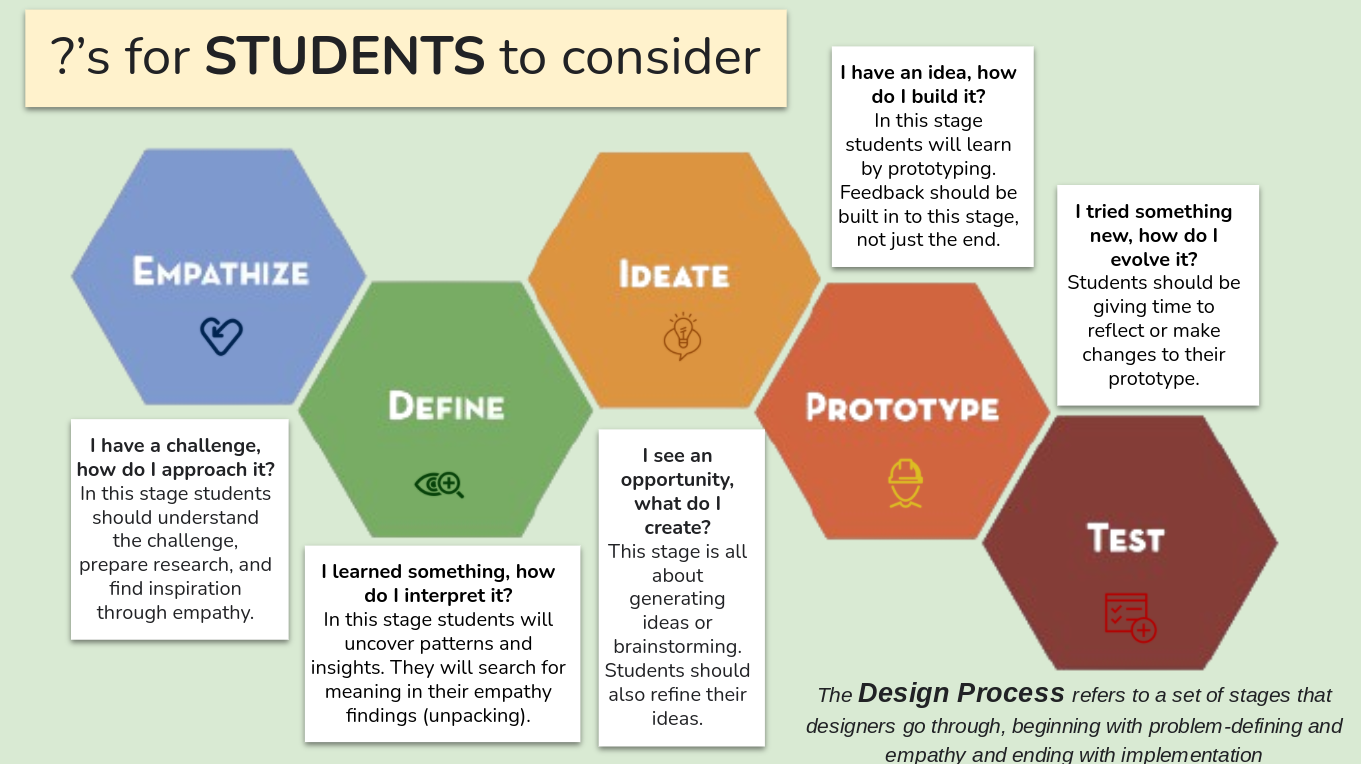Schools today are facing many challenges; one of them that needs solving is how to handle learning loss. Recently, I read that 2021-2022 school year 7th graders have not had a normal school year since they were 4th graders. My own current 1st grader has never had a ‘normal year’ of school. There is a need now more than ever to critically reflect and be open to innovative approaches for meeting the changing and varied needs of students. I truly believe an answer to those needs is Design Thinking.
There is a need now more than ever to critically reflect and be open to innovative approaches for meeting the changing and varied needs of students.
Design Thinking has been defined as an analytic and creative process (Design Process) that provides opportunities to experiment, prototype, gather feedback, and redesign (Razzouk & Shute, 2012). Through this creative process, students become designers and take on real world roles. They begin with empathy and problem defining and end with implementation. In the Design Process, students are given opportunities to receive timely feedback from stakeholders and make changes to their design. This design could be something physical like a storyboard/ cardboard build, or something digital like a website or Tinkercad 3D prototype. In 2018, I was lucky enough to attend a professional development hosted by Plainfield Community Schools over the Design Process. Since then, I have been implementing this way of teaching and enjoying my front row seat of watching my students redefine problems, CREATE, take informed risks, and take charge of their learning. Through my experience, there are five ways I believe Design Thinking helps overcome the learning loss so many districts are experiencing.
1. Creativity
I list this first for a reason. Kids need outlets for creativity and the traditional classroom does not offer enough opportunities for students to think outside the box. Today’s students spend a large portion of their day mindlessly consuming other peoples’ digital content. Design thinking allows teachers to activate students’ creativity and can empower them to be the change-makers our world needs. Note to teachers: YOU need to believe in your creativity, too!
2. Communication
In Design Thinking, students spend a lot of their time collaborating with their peers, and this requires them to practice their communication skills! Students also have to come up with creative ways to communicate their solutions. This could be a digital or physical prototype or even a presentation. Finally, giving and receiving feedback is an integral part of Design Thinking because students practice constructive feedback that they will use to adjust their end product. Design Thinking also transforms how educators work together in optimistic and action-oriented new ways.
3. Critical Thinking
Design Thinking has students solving problems whose answers can not be Googled. When students are given open-ended real world challenges, they are invited to inquire more deeply, find their own unique answers to these questions, and understand the diversity of right answers.
4. Community Building
True Design Thinking encourages students to work collaboratively with communities to solve problems. Today’s students are more empathetic than we give them credit for. By interacting with those outside of their classroom, it allows both students and community members to be more culturally sensitive and inclusive and see others’ perspectives. Students need to be empowered to solve problems that we do not yet even know are problems. Our communities depend on these future generations.
5. Ownership of Learning
Design Thinking allows for student engagement and empowerment. Many projects allow for student voice and choice, and this encourages student ownership of their learning. The teacher becomes a true facilitator and mentor, checking in with students and regulating goals that students often set for themselves. As I mentioned earlier, giving and receiving feedback and allowing students time to adjust allows for growth and reflection. Today, student success requires skills for collaboration, creativity, communication, and critical thinking; we are navigating these students into an unknown and complex future. Through Design Thinking, students can help take charge of their own learning and combat learning loss over the past year and a half. If you are not familiar with Design Thinking already, below are two images that include questions from both the teacher and student viewpoints. Also, here is a resource that includes Design Thinking lessons from English to Physical Education! If you would like to know more or just to chat about the process, please feel free to contact jcrone@plainfield.k12.in.us.
Resources
Please login or register to claim PGPs.
Alternatively, you may use the PGP Request Form if you prefer to not register an account.





